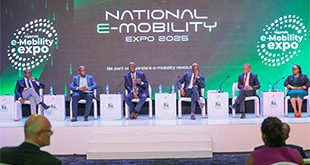
Save driving tips in highway emergency
| MOTORING GURU | Imagine you are driving at 140km/hr or over and your vehicle tyre bursts; what is the right way to react? A wrong move could lead to major problems; including loss of vehicle and lives. Therefore, all drivers need to be prepared for this unusual but potentially major accident. It does not matter if you are the smartest driver or your vehicle is the best maintained; a tyre burst can happen to you due to any number of reasons.
Your tyre could be slashed by debris on the road surface, the vehicle could be overloaded or the tyre pressure could be lower than recommended. Also the tyre could be weakened by constant bangs and poor wheel alignment, driving in extreme heat, or aging. Therefore, always check the condition of your vehicle tyres constantly.
If, in spite, of all proper maintenance and precautions you get a burst tyre, the most important thing to do is to remain calm. As a human being facing danger, the natural instinct is panic. Try to overcome this by thinking about the consequences of your positive reaction. If you react right you could be saving your life and that of other road users. But if you react wrong, you endanger everyone. So do not panic and step hard on the break. This could cause the car to spin, roll over, or tumble and you lose control. Instead, ease off the accelerator slowly. In any case the car slows down automatically.
You main job is to steer the vehicle. This is mainly because the steering will turn in the direction of the burst tyre. So correct this by steering in the opposite direction. However, this should be gentle or else the car could spin out of control.
Your steering must also consider which tyre has burst. When a front tyre bursts, it can often cause more steering problems than if a rear wheel burst. The car will naturally pull to the side whose tyre has burst, so you will need to counteract this by turning the wheel in the opposite direction.
On the other hand, it the rear tyre bursts, the vehicle will most likely swing from one side to the other. But this is only if you were driving at slow speed. In case, of fast speeds, the effect is more dramatic. So always drive at slow safe speeds.
In case of rear tyre burst, you must hold steering firmly with both hands and direct the vehicle in your desired direction until it slows down. Don’t step on brake. Instead, use engine breaking to slow vehicle down. Or if you sense that it is safe, you may use the handbrake; pulling and releasing it gently as required. If your vehicle has cruise control and it is activated, switch it off immediately.
Once you regain stability, let the car move with the decelerating engine speed and let it stop once you get to a safe spot. Do not stop in the middle of the road, if you can, as this could lead to a massive collision.
When your car has safely stopped and you’ve put up your safety alerts, including the emergency triangle, you can then safely get your car sorted out. You can either do a quick DIY and change the tyre yourself with your emergency kit or call for help. Whatever you decide, always remain alert and consider your safety. Don’t try driving to the nearest garage as this may cause further damage to your car – unless you are in an unsafe area.
****
 The Independent Uganda: You get the Truth we Pay the Price
The Independent Uganda: You get the Truth we Pay the Price



